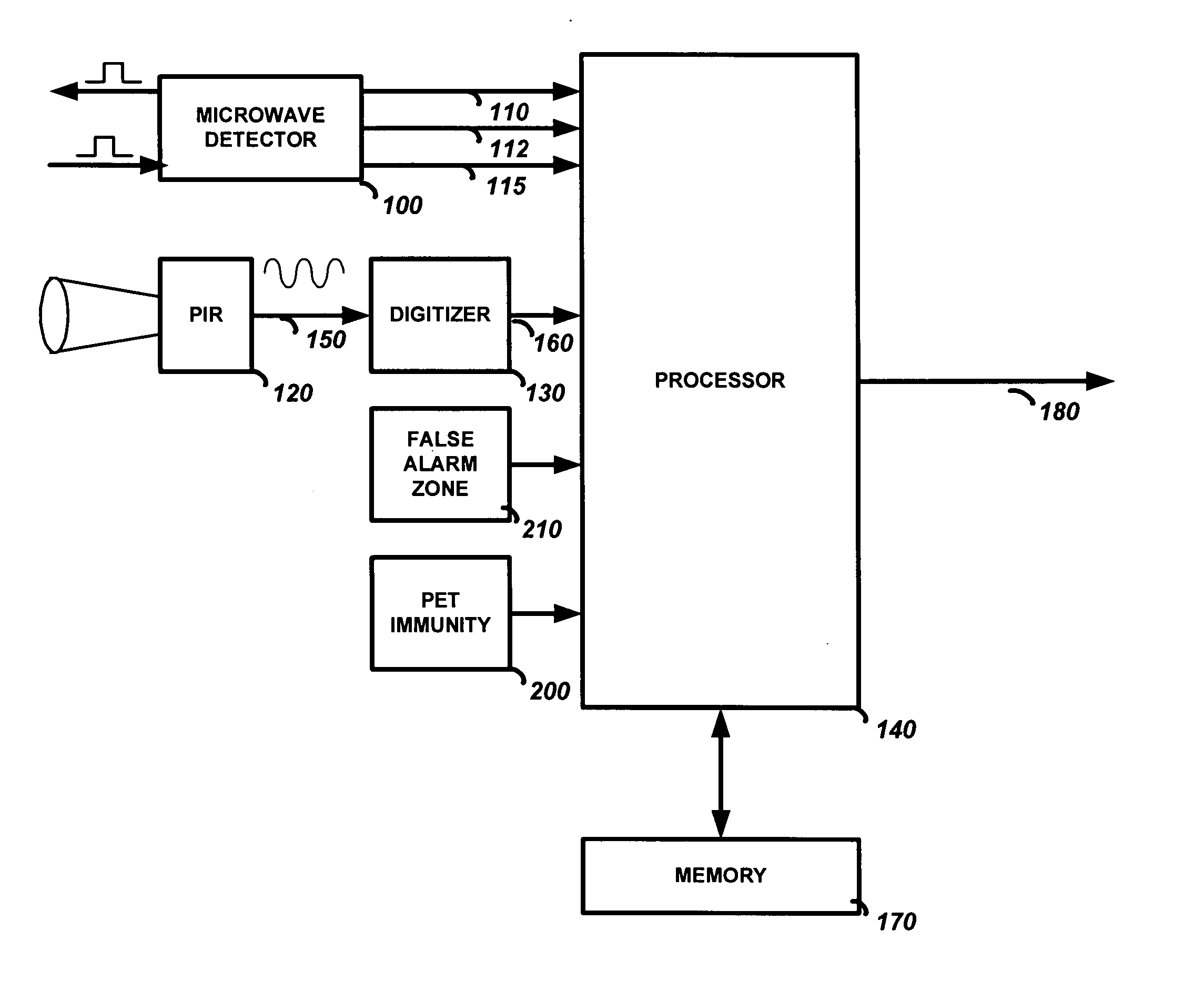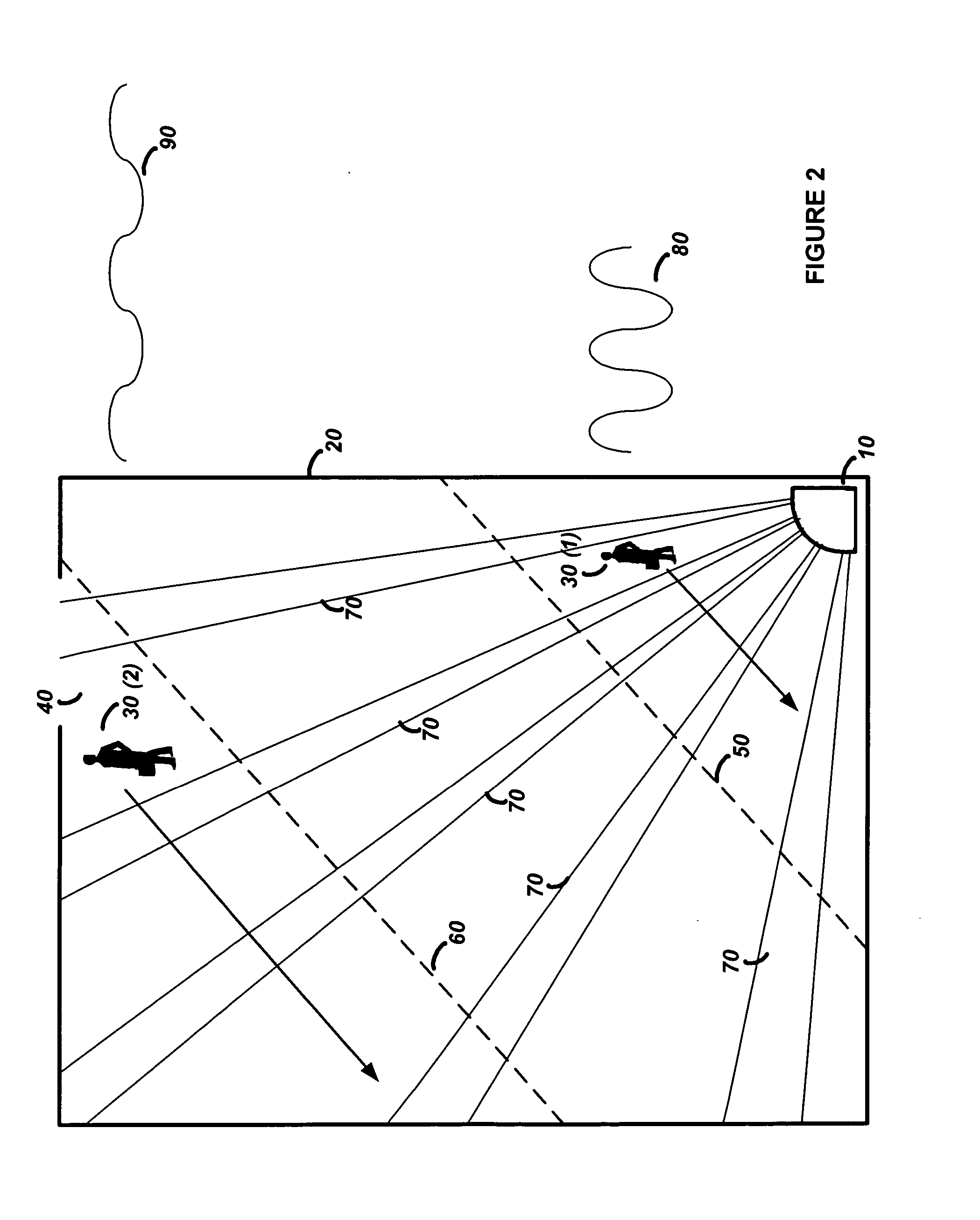Dual technology sensor device with range gated sensitivity
a sensor and range gate technology, applied in the field of security systems, can solve the problems of pir sensor being more susceptible to noise and false alarms, pir sensor being more vulnerable to false alarms, and unit being very false alarm prone, so as to increase the performance of security devices, reduce false alarms, and increase the performance
- Summary
- Abstract
- Description
- Claims
- Application Information
AI Technical Summary
Benefits of technology
Problems solved by technology
Method used
Image
Examples
Embodiment Construction
[0021] The preferred embodiments of the present invention will now be described with respect to the Figures. FIG. 1 illustrates a block diagram of the operation of the security device 10 in a region 20. The security device 10 is programmed, through adjustment of jumpers by the installer, with the size of the region 20 during installation. When the security device 10 is armed, it protects the region 20 by transmitting microwave pulses through the region and collecting the pulses that are reflected back to the security device 10. As the intruder 30 walks into the region 20 through the entrance 40, he causes the reflected microwave pulses to change. The security device 10 senses the change and determines if the intruder 30 is less than 9 feet (shown by line 50), greater than 9 feet but less than 18 feet (shown by line 60), or greater than 18 feet from the security device 10. The calculation of the distance information is determined from the jumper information (during installation) and ...
PUM
 Login to View More
Login to View More Abstract
Description
Claims
Application Information
 Login to View More
Login to View More - R&D
- Intellectual Property
- Life Sciences
- Materials
- Tech Scout
- Unparalleled Data Quality
- Higher Quality Content
- 60% Fewer Hallucinations
Browse by: Latest US Patents, China's latest patents, Technical Efficacy Thesaurus, Application Domain, Technology Topic, Popular Technical Reports.
© 2025 PatSnap. All rights reserved.Legal|Privacy policy|Modern Slavery Act Transparency Statement|Sitemap|About US| Contact US: help@patsnap.com



